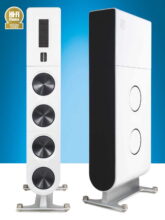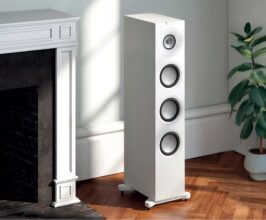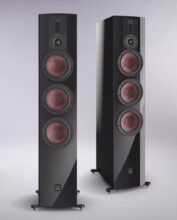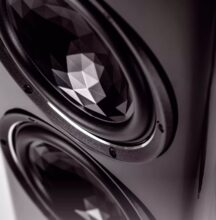Burmester BC350 Review: Beauty and the Beast
The high-end loudspeaker industry is faced with the challenge of creating products that not only perform at the highest level musically but also project a visual presence that makes them welcome in the elegant homes of those who can afford such things. Many loudspeaker companies are so focused on engineering that they lose sight of the fact that their creations must share the home’s main living space with their owners, often in an upscale decor. For many flagship speakers, form follows function to an extreme. I can imagine how many times a promising speaker presentation has been derailed by the statement, “I’m not having that in my home!” Read our Burmester BC350 Review.
Robert Harley
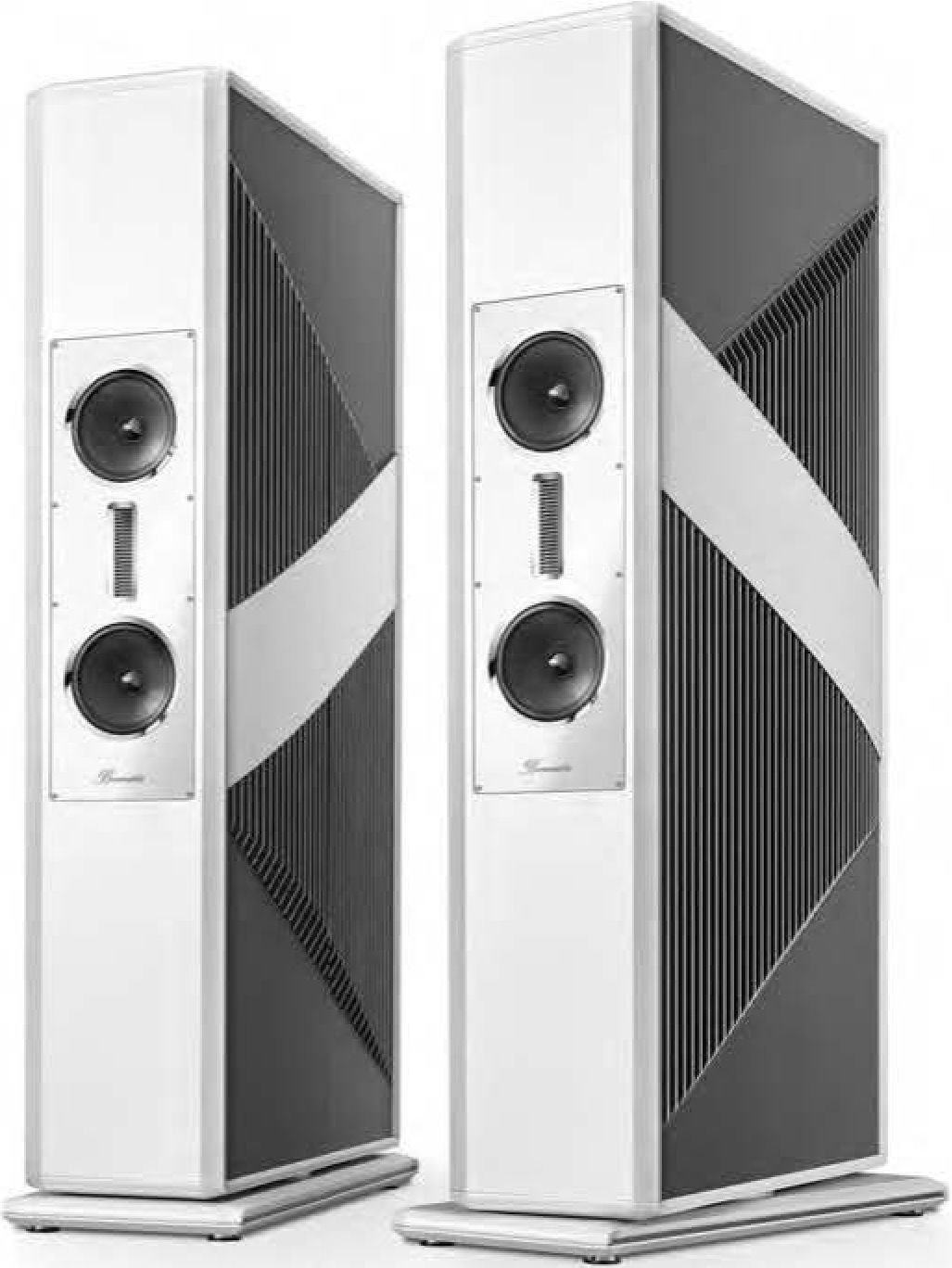
The Burmester BC350 reviewed here is not one of those speakers. Rather, the German company’s top model exudes a stunning elegance that eludes most big reference-level speakers. The BC350 has such a subtle and understated grace that I can’t imagine the BC350 being rejected by even the most discriminating interior designer. Moreover, the BC350’s finishes can be customized in a wide range of colors, materials, and textures, further highlighting its suitability for elegant homes.
But there’s more to the BC350 than looks alone. This speaker is the culmination of Burmester’s 26-year legacy of speaker-building, with the company pulling out all the stops to create its reference model. Four years in development, the BC350 incorporates some advanced and unusual technologies. In fact, two of the BC350’s features are unique to high-end loudspeakers.
The BC350’s proportions are different from most high-end speakers, with a relatively narrow baffle and a very tall (just over 6′) and deep enclosure. Sit in front of the BC350 and it doesn’t look that big, but stand next to it and you get a feeling for its formidable mass. Indeed, each speaker weighs nearly a thousand pounds. The relatively svelte design is made possible by side-firing woofers concealed beneath side panels. The side panels feature a striking geometric pattern composed of a wide diagonal metal band, vertical machined-alu-minum ribs, and flat panels. The owner can choose from a wide array of finishes, textures, and colors for these surfaces—even leather. The speaker has a very different look if finished in, say, wood veneer along with matte grey than when those surfaces are painted and highlighted with anodized metal. Even the plate on the front baffle can be customized; black chrome, gold plating, and matte anodized aluminum are just a few of the options.
The BC350 has two unique features that I’ve never seen before on a high-end loudspeaker. The first is the ability to rotate the speaker around its fixed base. The speaker sits on a stationary plinth, with the enclosure mounted to the plinth on a bearing that allows the user to easily adjust the toe-in simply by rotating the speaker on its base. Hash marks on the base provide repeatable reference points. Pushing gently on the speaker to rotate it gives you an instant feel for the quality of the bearing mechanism; it’s like opening the door of a bank vault. The base is coupled to the floor with elaborate vibration-resistant feet made from stainless steel, aluminum, and brass.
The second unique feature is the ability to change the driver configuration by throwing a rear-panel switch. The BC350 offers two modes, “Live” and “Pure.” In the Live mode, both 7.5″ midrange drivers and the upward-firing AMT tweeter are engaged. In the Pure mode, one of the midrange drivers and the upward-firing tweeter are disabled. Two completely independent crossovers are employed to change driver configurations. According to Burmester, “in Live mode, the loudspeaker offers a fascinating and involving audio experience. Here the focus of the tuning lies on dynamics, playfulness, and spaciousness, with maximum load capacity. The audio image in this mode is dynamic and powerful, while at the same time impressing the listener with its detailed resolution and ability to reproduce even huge volumes without distortion.” By contrast, Pure mode is for “entirely audiophile enjoyment. . .. Here the tonal setting is based on the priorities of pure high-end musical experience: authenticity, tonal balance, the highest possible resolution, precision, and plasticity.”
Specs & Pricing
| Type: | Three-way dynamic loudspeaker |
| Driver complement: | 2x 12.5″ side-firing woofers, 2x 7.5″ midrange drivers, two AMT tweeters (driver complement selectable by user) |
| Sensitivity: | 90dB |
| Impedance: | 4 ohms |
| Dimensions: | 16.5″ x 74.4″ x 39.4″ |
| Weight: | 926 lbs. each |
With two 12.5″ woofers per speaker, the BC350 packs some firepower. The woofers are a sandwich construction of unspecified materials and vented via large ports (also on the side panels) made from ceramic—and not just any ceramic. The ports are built for Burmester by the KPM Royal Porcelain Factory, a company that has made high-end porcelain products in Germany for more than 250 years. Porcelain was chosen for its mechanical stability and vibration control. In addition, the smoothness of the porcelain surface reportedly minimizes acoustical loss and doesn’t generate any noise of its own.
The front baffle supports a plate in its center that houses two 7.5″ midrange drivers and a tall thin Air-Motion Transformer (AMT) tweeter. There’s a second smaller AMT on the top of the cabinet designed to emulate reflections in a concert hall to create a larger soundstage. This upward-firing tweeter’s level is adjustable to suit the listening room. The midrange diaphragm is a composite of 15 materials, primarily papyrus, chosen for its inherent damping properties. The tall and thin AMT is said to be the world’s largest realization of this design concept, with the large size chosen for its greater power handling. The raw drivers are run-in for seven days, measured, and then matched to each other for a particular pair of speakers.
The enclosure is built around a frame consisting of the top, bottom, front baffle, and rear panel, all machined from aluminum blocks and then bolted together to form a solid structure. More than 375 pounds of aluminum goes into each speaker. The side panels are a multi-layer sandwich construction built from aluminum ribs, solid hardwoods, cork, and foam. The entire structure is braced internally. The cabinet design was created in conjunction with the Technical University of Berlin using a laser doppler vibrometer.
As mentioned, the BC350 employs two completely independent crossovers to realize the selectable driver configuration. The capacitors are gold, silver, aluminum, and oil. Although the manufacturer of the caps and inductors isn’t specified, a photo in the brochure suggests that the crossover components are top-quality parts sourced from Mundorf. The crossovers are mounted in a vibration-resistant sub-enclosure within the speaker cabinet.
One more thing. Bur-mester’s brochure for the BC350 is the best I’ve ever seen in the industry. It is a model of expressing the value of the company’s legacy, the speaker’s design and materials, the manufacturing methods, and the people behind the speaker’s creation. The brochure inspires confidence in the product, as it needs to when someone is considering spending $ for a pair of loudspeakers.
Listening
Because of the BC350’s size, weight, and the scarcity of review samples, I auditioned the speaker in the showroom of LMC Home Entertainment in Scottsdale, Arizona. This was part of the same visit in which I reviewed Burmester’s flagship power amplifier, the 159. That review in Issue 333 includes a more detailed description of the listening environment and associated components. The BC350 was driven by a pair of Burmester 159 amplifiers and sourced with the excellent Linn Klimax DSM server (which I had recently reviewed). I’ve visited many high-end showrooms around the world, but I have to say LMC Home Entertainment is the most impressive in its size, number and quality of listening rooms, variety of high-end products on active display, elegance of environment, and knowledge and commitment of the owner (Mike Ware) and his staff. Where else will you find every Wilson model on display, including the Chronosonic XVX and even the WAMM? That’s just a hint of the depth and breadth of LMC’s offerings.
Having learned about the BC350’s design before the trip, I went into the two-day listening sessions expecting that I would spend virtually the entire listening time in Pure mode, with only a brief examination of the Live mode. Based on Burmester’s description, I thought of Live mode as appropriate for times when many people are listening, when standing up in the kitchen cooking, and for parties, not for the single-seat audiophile experience. That assumption turned out to be very wrong.
After a few hours of listening to my longstanding reference tracks in Pure mode, the BC350 struck me as sounding relaxed and natural, with a sense of ease and no hint of excessive brightness or sibilance. On small-scale music—Melody Gardot, a Dexter Gordon quartet, a Pat Metheny/Lyle Mays duet—the BC350 sounded like a much smaller speaker, which is a high compliment, indeed. Big speakers often sound big all the time, diminishing the sense of intimacy and connection with the performance. The sound was remarkably gentle and laid-back, with timbres free from aggressive edge. The first words in my listening notes are “lush, liquid, natural voice, no sibilance or sizzle.” The BC350 has a softness and ease that belies its massive physicality. The treble was exceptionally smooth, combining good resolution of detail with a sense of ease. The top end never assaulted as it does with many speakers, even expensive ones. This quality, along with the intimate rendering, fostered a relaxed engagement. On the beautiful Dexter Gordon ballad “I Guess I’ll Hang My Tears Out to Dry” from Go, Dex’s tenor had a warmth through the lower midrange that gave the instrument its rich dense tone color, with no exaggeration of the upper harmonics. The gently played ride cymbal was perfectly balanced, sounding fully present with a full measure of energy yet not aggressive.
Moving on to large-scale music with an extended bottom end (Rutter’s Requiem on Reference Recordings, an invaluable reference track I’ve used for decades), the BC350 showed a decidedly “bottom-up” tonal balance. The very lowest organ pedal tones had commanding power and authority, which also stimulated some room resonance modes. In addition to creating a strong tonal foundation, the ability to play so low in frequency infused the soundstage with spatial cues to create a large and immersive soundstage. The bass was full and weighty, with a touch of additional bloom. Bass guitar had a visceral weight and body that gave the music a strong tonal and rhythmic foundation. The BC350 isn’t one of those speakers that sacrifices tonal density in the bass and upper bass in favor of lean tight articulation. Rather, the generous bass favors music’s physicality and propulsion rather than precise articulation. The BC350 will perform its best in a fairly large room that can handle strong low-bass energy.
Overall, the BC350 had a relaxed and intimate character that was at odds with its massive physical presence. But switching to “Live” mode changed its personality dramatically. As mentioned, in “Pure” mode, one of the two midrange drivers is disabled, as is the upward-firing AMT tweeter. In Live mode, the two midranges flanking the large AMT tweeter are active, creating a D’Appolito configuration. The upward-firing tweeter is also engaged, projecting treble energy upward to simulate the reflections in a concert hall. Suddenly, the speaker had more presence, dynamism, and sense of scale.
The small, intimate character noted above was replaced by a speaker that suddenly sounded like a big speaker; robust, energetic, projecting sound outward rather than encouraging the listener to lean in, and with a greatly expanded soundstage.
As much as I liked the BC350’s relaxed rendering in Pure mode, I thought that Live mode really allowed the speaker to come alive. The midrange was more forward, but not in an aggressive or pushy way. Rather, there was simply a greater sense of presence, immediacy, and palpability. Vocals were now projected forward between the speakers with greater tangibility. Soundstage focus was also more precise, with greater definition of image outlines. I also thought that the additional midrange energy was a better balance with the generous bass, forming a more continuous tonal spectrum. Even in Live mode, the BC350 retained its textural liquidity and ease. Keith Jarrett’s piano on the beautiful track “My Foolish Heart” from the live album of that name had no hardness or brittleness on the attacks, along with dense tonal color, and realistic reproduction of the instrument’s dynamic expression.
With large-scale upbeat music, the BC350 in Live mode was a powerhouse. The sense of openness, presence, dynamism, and the sheer size of the soundstage was
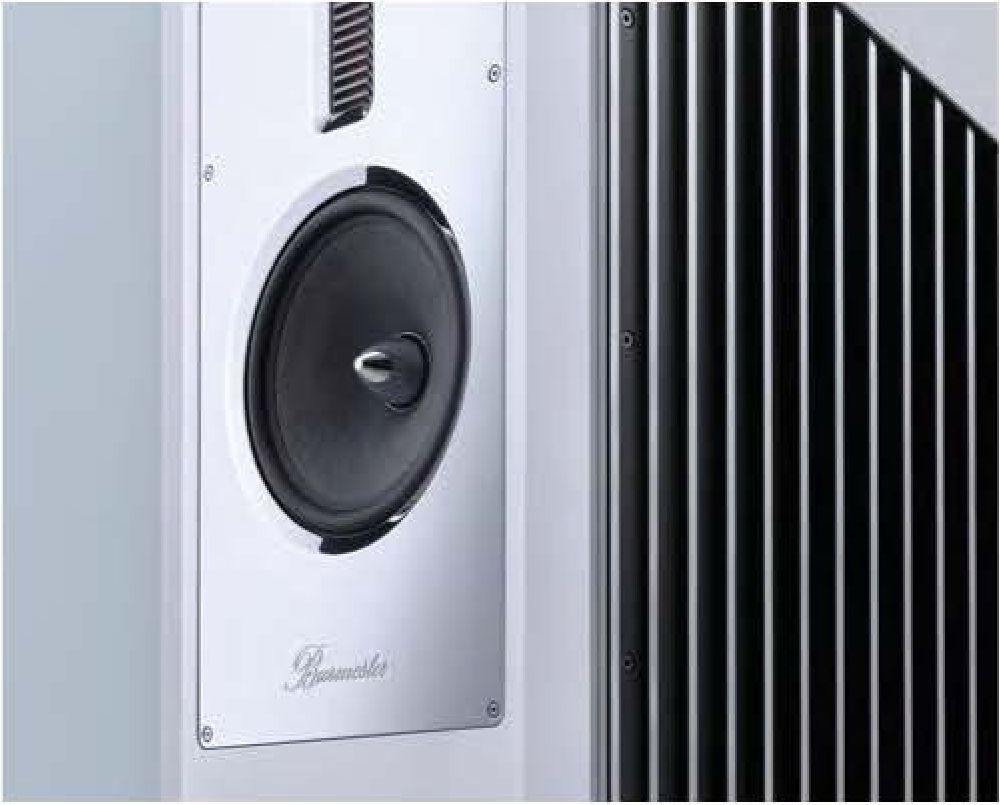
outstanding. On the track “The Cowboys Overture” from John Williams at the Movies on Reference Recordings, the visceral immediacy of the Dallas Winds was realistically thrilling, the BC350 reproducing a full measure of energy and vitality without sounding hard or congested on climaxes. The soundstage was expansive in every dimension, with instruments toward the back of the hail sounding appropriately distant and surrounded by rich reverberation. When the band plays full-tilt and is reproduced at a realistic volume, the BC350 delivers a thrilling ride. These qualities were also evident on The Arnold Overtures (also on Reference Recordings), with the big Burmester sounding appropriately big, majestic, and effortless in its dynamic rendering. Significantly, the BC350’s treble is so well-balanced and clean that even the most complex passages never veered into unpleasant brightness.
I decided to revisit some of the earlier tracks that I’d heard only in Pure mode now that I understood the BC350’s chameleon-like nature. Although Live mode reduced the sense of small-scale intimacy I heard in Pure, the Live setting reproduced Melody Gardot’s voice with greater conviction and expression. Nonetheless, I heard virtues in both renderings, and the beauty of the BC350 is that you get to choose based on your room, associated equipment, music, and taste. There’s another factor that influences these qualities of immediacy versus intimacy; the amount of toe-in. More toe-in puts the listener more on-axis to the drivers, increasing focus and palpability. The ability to change driver configuration, coupled with the adjustable toe-in, allows you to fine-tune the speaker for a specific type of music or even for individual recordings. I don’t know of another speaker that offers this flexibility.
Conclusion
Burmester’s BC350 offers many virtues, not the least of which is an industrial and aesthetic design that brings a sense of elegance, luxury, and refinement to the flagship-speaker category. Photos don’t do the speaker justice; you really need to have eyes on the product to appreciate its design and craftsmanship. The closer you look, the more you appreciate what Burmester has accomplished. Sonically, the BC350 offers generous bass with deep extension and the ability to play loudly without strain. Its best quality is its smooth and liquid rendering of timbre that starts in the midrange and extends all the way to the silky top end. That AMT tweeter is an excellent transducer. This is a speaker that you can listen to for long periods without fatigue. Despite the sense of ease, the BC350 still conveys a full measure of energy and dynamism.
The BC350 is unique among loudspeakers in its selectable driver array and easily adjustable toe-in. These features make the Burmester adaptable to a wide range of environments and listening tastes, even for individual recordings.
The competition at this price level is fierce; there are many outstanding speakers to choose from with this budget. But the BC350’s chameleon-like nature, coupled with the truly stunning visual presence, puts it in a category all its own.



